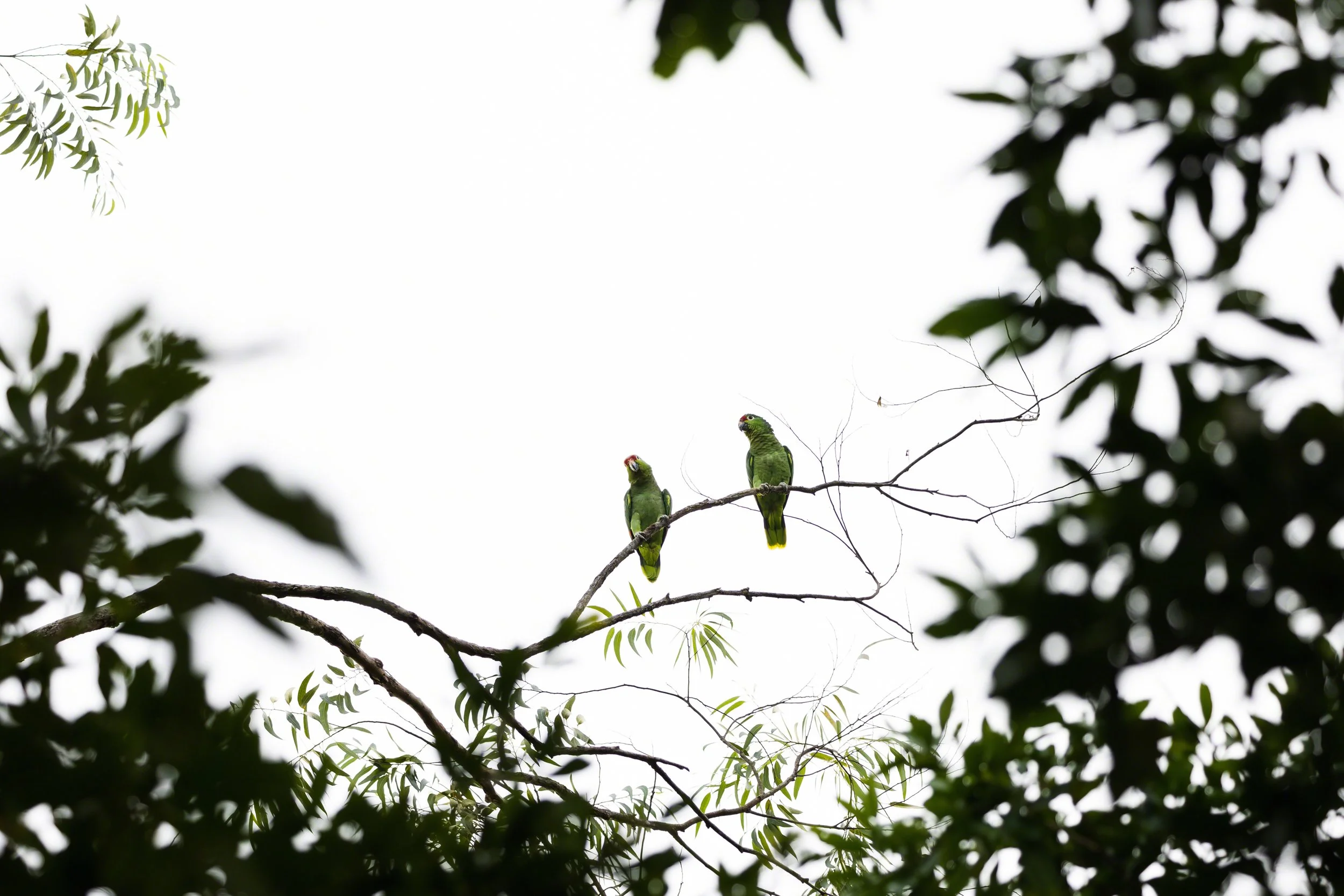
Los Pàjaros
Though there are many, many parrots in Costa Rica, los pàjaros means ‘birds’ in general – not just parrots – with which the country is also replete.
Birds such as this wood creeper, an awfully curious character who flitted up and down tree trunks surrounding our little band, trying to get a good look.
Among these many species of birds, the country’s tropical forests also play host to what are regarded “among the most beautiful of birds”¹ — trogons.
This family of birds is made up of 46 species including the quetzal, which is renowned for its beautiful, long tail.
Here, we have the black-throated trogon, though you’ll be forgiven for thinking, like me, “that’s not black, that’s green!”, but then again it’s also called ‘yellow-bellied trogon’, but there are so many trogons with yellow bellies that it doesn’t narrow it down at all.
Not much is all that known about trogons, perhaps due in part to their reclusive nature. The word trogon is the Greek word for ‘nibbling’, which was allotted to this family given how they make nests by gnawing holes in trees.
First up, we can see the more colourful male on the left, as is usual in the animal kingdom, followed by a female on the right that was hanging out close by.
And here’s one of their cousins – a slaty-tailed trogon.
Bet you can’t guess whether this colourful specimen is male or female…
Moving on to something larger — the common black hawk. They bear a frightfully strong resemblance to the great black hawk, but the greats are, expectantly, larger. A more sound difference is that they have different calls. So no matter how similar they may look in my little illustrated guide, they’re not the same.
They can be found around mangrove forests, and even build their nests there. Rather like storks, they re-use their nests and keep adding to them year on year.
Now, the mangrove tree is a salt-tolerant species and as such is found on tropical and subtropical coastlines. These areas are subject to changes in the tide, which is what makes the mangrove tree more easily recognisable – they have evolved to grow long thick roots, like legs, that support the trees even after the water has gone back out.
Not all species are so readily adapted to the intertidal nature of these habitats, which in turn limits the number of species that can live in this type of forest.
One of the species that does live there is the Mangrove crab. It’s no coincidence, then, that common black hawks should build their nests in mangrove trees as the bulk of their diet is made up of this little decapod.
Even some of the smallest birds can walk the walk and talk the talk.
First up, on the left, is a Collared redstart on the cusp of reaching full maturity, at which point the remaining black feathers between the eyes and beak will also turn yellow.
And on the right, an Orange-collared manakin, neck puffed out warning another male it heard to leave his territory.
Found in almost all regions of the country is the Yiguirro, or Clay-coloured thrush, which has been the country’s national emblem since January of 1977.
Now, surely, with birds as beautiful as the Quetzal, or as large and strong as the Black hawks, why choose this unremarkable bird?
It ‘s largely because of its recognisable birdsong sung by males during mating season, which alerts farmers that the rainy season will soon be upon them².
It’s also the country’s most common bird. Though I doubt very much that this particular point would inspire cities like London to take on the pigeon as their emblem.
Another of the more colourful birds that can be found is the Keel-billed toucan, which also goes by the much more appropriate name — rainbow-billed toucan.
The rainbow-billed toucan is one of the more sociable birds out there and rarely flies solo.
On the left is a toucan in the wild, but on the right is Morgana, one of the permanent residents at the Jaguar Rescue Centre.
If you ever visit Costa Rica – and you should – be sure to pay them a visit in Playa Chiquita, Limon.
A Tiger Heron trying to catch some lunch.
A Blue Heron trying to catch some Zs.
References
¹ Collar, N.J. (2001). "Family Trogonidae (Trogons)", pp. 80–129 in del Hoyo, J.; Elliot, A. & Sargatal, J. (eds.). (2001) Handbook of the Birds of the World, Vol. 6 Mousebirds to Hornbills. Lynx Edicions, Barcelona, Spain. ISBN 84-87334-30-X
² Tico Travel – What is the National Bird of Costa Rica?
